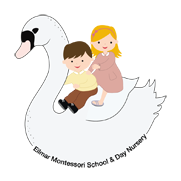Early Years Goals
Early Years Goals and Montessori Practices
We believe at our Montessori school we go the extra mile working with you and your child to achieve more than the standard early learning goals.
This developmental progress is documented in the child’s Record of Achievement. It is important to note that children’s progress is recorded from the moment the child enters a setting, be it at the age of six, twelve or twenty-four months. All recorded routines, activities and games contribute towards the child’s holistic development.
The following tables should serve as a guide and an overview of activities which might help children develop and contribute towards the achievement of the early learning goals at the end of the reception year in Montessori settings.
There are five main sections which need to be taken under consideration, Personal, Social and Emotional Development, Communication, Language and Literacy, Problem Solving, Reasoning and Numeracy, Knowledge and understanding of the world, Physical development and Creative Development
Personal, Social and Emotional Development
| Early learning goals as identified in statutory guidance | Examples of Montessori practice |
|---|---|
| Children should: | Children: |
|
|
|
|
Communication, Language and Literacy
| Early learning goals as identified in statutory guidance | Examples of Montessori practice |
|---|---|
| Children should: | Children: |
|
|
|
|
|
|
|
|
Problem Solving, Reasoning and Numeracy
| Early learning goals as identified in statutory guidance | Examples of Montessori practice |
|---|---|
| Children should: | Children: |
|
|
|
|
|
|
|
|
|
|
Knowledge and Understanding of the World
| Early learning goals as identified in statutory guidance | Examples of Montessori practice |
|---|---|
| Children should: | Children: |
|
|
|
|
|
|
|
|
Physical development
| Early learning goals as identified in statutory guidance | Examples of Montessori practice |
|---|---|
| Children should: | Children: |
|
|
|
|
|
|
|
|
|
|
Creative Development
| Early learning goals as identified in statutory guidance | Examples of Montessori practice |
|---|---|
| Children should: | Children: |
|
|
|
|
|
|
